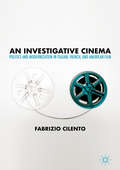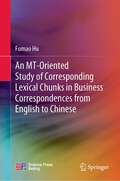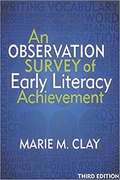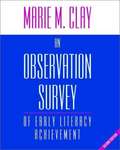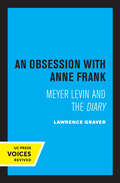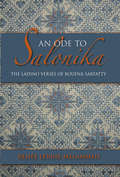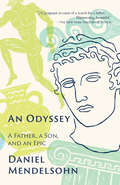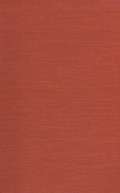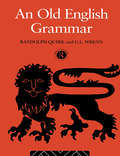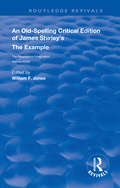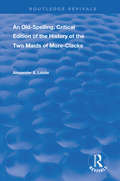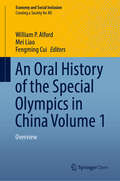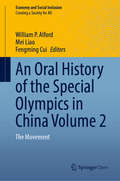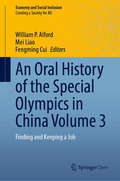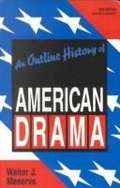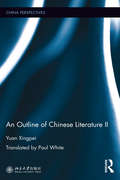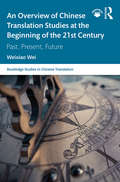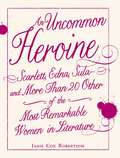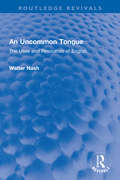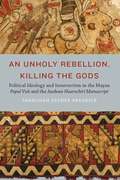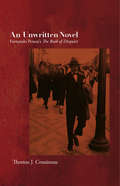- Table View
- List View
An Investigative Cinema: Politics and Modernization in Italian, French, and American Film
by Fabrizio CilentoThis book traces the development of investigative cinema, whose main characteristic lies in reconstructing actual events, political crises, and conspiracies. These documentary-like films refrain from a simplistic reconstruction of historical events and are mainly concerned with what does not immediately appear on the surface of events. Consequently, they raise questions about the nature of the “truth” promoted by institutions, newspapers, and media reports. By highlighting unanswered questions, they leave us with a lack of clarity, and the questioning of documentation becomes the actual narrative. Investigative cinema is examined in relation to the historical conjunctures of the “economic miracle” in Italy, the simultaneous decolonization and reordering of culture in France, the waves of globalization and neoliberalism in post-dictatorial Latin America, and the post-Watergate, post-9/11 climate in US society. Investigative cinema is exemplified by the films Salvatore Giuliano, The Battle of Algiers, The Parallax View, Gomorrah, Zero Dark Thirty, and Citizenfour.
An MT-Oriented Study of Corresponding Lexical Chunks in Business Correspondences from English to Chinese
by Fumao HuThis book sheds new light on chunk in business correspondence in order to promote the advancement of machine translation. By presenting a bilingual chunk table for correspondence and providing basic theoretical and empirical data on the construction of an MT-based English-Chinese chunk bank for business correspondence, it seeks to improve the accuracy of machine translation systems in a new way. It mainly addresses two questions: (1) How can business English correspondence chunks be defined in machine translation? (2) What are the correspondences between English-Chinese business letter chunks for machine translation? With the aid of a parallel corpus, qualitative and quantitative research methods, and the construction grammar theory, the book puts forward a theoretical model of chunk composition analysis. Further, the findings presented here can be used for the machine translation of English-Chinese business letters, helping to break down communication barriers and promote international business and exchanges.
An Observation Survey of Early Literacy Achievement
by Marie ClayThis third edition of Marie Clay's highly-valued An Observation Survey of Early Literacy Achievement presents her familiar assessment tasks designed for systematic observation of young children as they learn to read and write. Always respecting the author's intention, the editors have taken a fresh look at the way the book's message is communicated to teachers. Layout and expression have been refreshed to ensure clear understanding, and the administration and interpretation of each task in the survey have been carefully structured for consistent delivery. <p><p> The observation procedures arose from a theory of how children learn to manage the complex task of reading and writing continuous text. That process is described in Marie Clay's books Becoming Literate: the Construction of Inner Control; Change Over Time in Children's Literacy Development, and By Different Paths to Common Outcomes. The intervention described in Literacy Lessons Designed for Individuals makes use of these observation procedures.
An Observation Survey of Early Literacy Achievement
by Marie M. ClayThis book provides teachers and school systems with essential information about how to assess young children's progress in literacy learning. The six tasks of the Observation Survey are used by teachers across the world to explore children's knowledge of early reading and writing, monitor progress, guide instruction, and reliably identify children for supplementary assistance. <p><p> This fourth edition of Marie Clay's seminal text includes two important new developments: 1. a revised task for assessing children's phonemic awareness and sound-letter knowledge is more sensitive to different rates of progress and to the difficulties some children might have; 2. updated norms for five of the Observation Survey tasks will enable teachers and schools to more accurately monitor and compare the progress of five-to-seven-year-old children across different aspects of literacy learning. <p><p> The observation procedures arose from a theory of how children learn to manage the complex task of learning to read and write continuous text.
An Observation Survey of Early Literacy Achievement (2nd Edition)
by Marie M. ClayThis book provides for the systematic observation of young children's responses to classroom reading and writing in the first years of school.
An Obsession with Anne Frank: Meyer Levin and the Diary
by Lawrence GraverAnne Frank's Diary has been acclaimed throughout the world as an indelible portrait of a gifted girl and as a remarkable document of the Holocaust. For Meyer Levin, the respected writer who helped bring the Diary to an American audience, the Jewish girl's moving story became a thirty-year obsession that altered his life and brought him heartbreaking sorrow. Lawrence Graver's fascinating account of Meyer Levin's ordeal is a story within a story. What began as a warm collaboration between Levin and Anne's father, Otto Frank, turned into a notorious dispute that lasted several decades and included litigation and public scandal. Behind this story is another: one man's struggle with himself—as a Jew and as a writer—in postwar America. Looming over both stories is the shadow of the Holocaust and its persistent, complex presence in our lives. Graver's book is based on hundreds of unpublished documents and on interviews with some of the Levin-Frank controversy's major participants. It illuminates important areas of American culture: publishing, law, religion, politics, and the popular media. The "Red Scare," anti-McCarthyism, and the commercial imperatives of Broadway are all players in this book, along with the assimilationist mood among many Jews and the simplistic pieties of American society in the 1950s. Graver also examines the different and often conflicting ways that people the world over, Jewish and Gentile, wanted Anne Frank and her much-loved book to be represented. That her afterlife has in extraordinary ways taken on the shape and implications of myth makes Graver's story—and Meyer Levin's—even more compelling. This title is part of UC Press's Voices Revived program, which commemorates University of California Press’s mission to seek out and cultivate the brightest minds and give them voice, reach, and impact. Drawing on a backlist dating to 1893, Voices Revived makes high-quality, peer-reviewed scholarship accessible once again using print-on-demand technology. This title was originally published in 1995.
An Ode to Salonika: The Ladino Verses of Bouena Sarfatty
by Renée Levine MelammedThrough the poetry of Bouena Sarfatty (1916-1997), An Ode to Salonika sketches the life and demise of the Sephardi Jewish community that once flourished in this Greek crossroads city. A resident of Salonika who survived the Holocaust as a partisan and later settled in Canada, Sarfatty preserved the traditions and memories of this diverse and thriving Sephardi community in some 500 Ladino poems known as coplas. The coplas also describe the traumas the community faced under German occupation before the Nazis deported its Jewish residents to Auschwitz. The coplas in Ladino and in Renée Levine Melammed's English translation are framed by chapters that trace the history of the Sephardi community in Salonika and provide context for the poems. This unique and moving source provides a rare entrée into a once vibrant world now lost.
An Odyssey: A Father, a Son, and an Epic
by Daniel MendelsohnFrom award-winning memoirist and critic, and bestselling author of The Lost, comes a deeply moving tale of a father and son's transformative journey in reading -- and reliving -- Homer's epic masterpiece.When eighty-one-year-old Jay Mendelsohn decides to enroll in the undergraduate Odyssey seminar his son teaches at Bard College, the two find themselves on an adventure as profoundly emotional as it is intellectual. For Jay, aretired research scientist who sees the world through a mathematician's unforgiving eyes, this return to the classroom is his "one last chance" to learn the great literature he'd neglected in his youth -- and, even more, a final opportunity to more fully understand his son, a writer and classicist. But through the sometimes uncomfortable months that the two men explore Homer's great work together -- first in the classroom, where Jay persistently challenges his son'sinterpretations, and then during a surprise-filled Mediterranean journey retracing Odysseus's famous voyages -- it becomes clear that Daniel has much to learn, too: Jay's responses to both the text and the travels gradually uncover long-buried secrets that allow the son to understand his difficult father at last. As this intricately woven memoir builds to its wrenching climax, Mendelsohn's narrative comes to deeply echo The Odyssey itself, with its timeless themes of deception and recognition, marriage and children, the pleasures of travel, and the meaning of home. Rich with literary and emotional insight, An Odyssey is a renowned author-scholar's most triumphant entwining yet of personal narrative and literary exploration.
An Odyssey: A Father, a Son, and an Epic
by Daniel MendelsohnFrom award-winning memoirist and critic, and bestselling author of The Lost: a deeply moving tale of a father and son's transformative journey in reading--and reliving--Homer's epic masterpiece. <P><P>When eighty-one-year-old Jay Mendelsohn decides to enroll in the undergraduate Odyssey seminar his son teaches at Bard College, the two find themselves on an adventure as profoundly emotional as it is intellectual. <P><P>For Jay, a retired research scientist who sees the world through a mathematician's unforgiving eyes, this return to the classroom is his "one last chance" to learn the great literature he'd neglected in his youth--and, even more, a final opportunity to more fully understand his son, a writer and classicist. <P><P>But through the sometimes uncomfortable months that the two men explore Homer's great work together--first in the classroom, where Jay persistently challenges his son's interpretations, and then during a surprise-filled Mediterranean journey retracing Odysseus's famous voyages--it becomes clear that Daniel has much to learn, too: Jay's responses to both the text and the travels gradually uncover long-buried secrets that allow the son to understand his difficult father at last. <P><P>As this intricately woven memoir builds to its wrenching climax, Mendelsohn's narrative comes to echo the Odyssey itself, with its timeless themes of deception and recognition, marriage and children, the pleasures of travel and the meaning of home. Rich with literary and emotional insight, An Odyssey is a renowned author-scholar's most triumphant entwining yet of personal narrative and literary exploration.
An Olaf Stapledon Reader (Casebooks #18)
by Robert Crossley Editor[from the back cover] "Olaf Stapledon (1886-1950)--philosopher, novelist, educator, and social activist--had an imagination unlike that of any other author. Along with H. G. Wells he is remembered as one of the most original pioneers of twentieth-century science fiction. This anthology of Stapledon's work offers many of his fictional gems, including sections of his best-known novels, Last and First Men, Darkness and the Light, and Star Maker, and the complete text of a novella, The Flames: A Fantasy and the story "Old Man in New World." Many previously unpublished writings, such as Stapledon's essays, poems, memoirs, and letters round out this collection. Robert Crossley is professor of English at the University of Massachusetts, Boston. He is the author of H. G. Wells and Olaf Stapledon: Speaking for the Future (also published by Syracuse University Press). He is the editor of Talking Across the World: The Love Letters of Olaf Stapledon and Agnes Miller, 1913-1919."
An Old English Grammar
by Randolph Quirk C. WrennThis book is designed especially for the literary student of English, and provides a single compact grammar primarily concerned with Classical Old English, rather than the other Old English dialects. The book takes a descriptive approach and avoids assuming a knowledge of Germanic philology. The introduction provides a minimum background of knowledge and indicates the kinds of evidence on which the grammatical description is based.
An Old-Spelling Critical Edition of James Shirley's The Example (Routledge Revivals)
by William F. JonesOriginally published in 1987, An Old-Spelling Critical Edition of James Shirley's The Example, offers a critical examination of James Shirley's 1634 play, The Example, based on collating ten of the twenty-one copies of the play noted in Sir Walter Greg's Bibliography.
An Old-Spelling, Critical Edition of The History of the Two Maids of More-Clacke (Routledge Revivals)
by Alexander S LiddieFirst published in 1979, this volume is an old-spelling, critical edition of a comedy by Robert Armin, written between 1598 and 1606, a period spanning his employment as a comic actor in Shakespeare’s company. Had all his writings been among the many of his period which disappeared, we should not be crucially deprived. Nonetheless, Alexander S. Liddie suggests that Armin’s life and work deserve a niche in our understanding of the literary, theatrical and social scene of Shakespearian England. Armin’s talent, though limited, was varied, and he was one of only a few playwrights of his era who combined the creative function with the mimetic art. While the style of The Two Maids of More-clacke is admittedly garbled and rarely lucid, its plot incredibly labyrinthian and its characterisations vague, these elements also serve as vehicles for an extended criticism-by-parody of Shakespeare’s major tragedies, particularly Hamlet. All those interested in Shakespeare must be curious to assess this popular entertainer’s response to the great dramatist.
An Oral History of the Special Olympics in China Volume 1: Overview (Economy and Social Inclusion)
by William P. Alford Mei Liao Fengming CuiThis open access book is unique in presenting the first oral history of individuals with an intellectual disability and their families in China. In this summary volume and the two accompanying volumes that follow, individuals with an intellectual disability tell their life stories, while their family members, teachers, classmates, and co-workers describe their professional, academic, and family relationships. Besides interview transcripts, each volume provides observations and records in real time the daily experiences of people with an intellectual disability. Drawing on the methodologies of sociology and oral history, the summary volume provides an unprecedented account of how people with intellectual disabilities in China understand themselves while also examining pertinent issues of public policy and civil society that have ramifications beyond the field of disability itself.
An Oral History of the Special Olympics in China Volume 2: The Movement (Economy and Social Inclusion)
by William P. Alford Mei Liao Fengming CuiThis open access book contains the oral histories that were inspired by the work of the Special Olympics in conjunction with the 50th anniversary of its founding. The foreword and prefatory materials provide an overview of the Special Olympics and its growth in the People’s Republic of China. The sections that follow record interview transcripts of individuals with intellectual disabilities living in Shanghai. In addition to chronicling the involvement of these individuals and their families in the Special Olympics movement, the interview transcripts also capture their daily lives and how they have navigated school and work.
An Oral History of the Special Olympics in China Volume 3: Finding and Keeping a Job (Economy and Social Inclusion)
by William P. Alford Mei Liao Fengming CuiThis open access book brings together oral histories that record the experiences of individuals with intellectual disabilities in Shanghai as they participate in their careers. Employees with intellectual disabilities describe their experiences seeking, attaining, and maintaining employment. Their managers, colleagues, and family members also provide keen insight into the challenges and opportunities these individuals have encountered in the process of securing employment. An appendix provides a compilation of employment policies related to people with intellectual disabilities, particularly with respect to Shanghai.
An Outline History of American Drama (2nd Edition, Revised and Updated)
by Walter J. MeserveIn all instances the plots of important plays are summarized and the titles of relatively significant plays are listed. Because most plays and playwrights suggest more than a single point of view, however, authors and their plays are frequently treated or mentioned under more than one heading. To show the closeness and interdependence of American drama, theatre, and criticism, each chapter relates the progress of dramatic criticism and the achievements of the theatre to a developing American drama. Using information that has not been available to previous historians of American drama (the product of recent research and scholarship) and approaching the subject from the point of view of trends, ideas, and the contributions of particular plays rather than from a chronological discussion of important dramatists, this outline history provides a new and basic approach for a more appreciative understanding of American drama.
An Outline of Chinese Literature II (China Perspectives)
by Yuan XingpeiDifferent from previous researches weighted toward historical description and individual writer and work, this book establishes a general analytical system and a multi-angled methodology to examine Chinese literature. In ancient China, there was no definite concept of pure literature. Considering both modern ideas of literature and the corresponding traditional concept, this book broadly discusses Shi and Fu poetry, Ci poems and Qu verses, novels and essays. The four chapters deal with the origins, evolutions, structures and styles of the various genres respectively, analyzing some representative works. It's worth mentioning that the book is written from an individual perspective. Based on his own appreciation as a reader, the author expresses the depth of his various related impressions on Chinese literature. In addition, it conveys many fresh points of views, which will enrich and inspire related researches. This book will appeal to scholars and students of Chinese literature and comparative literature. People who are interested in Chinese literature and Chinese culture will also benefit from this book.
An Overview of Chinese Translation Studies at the Beginning of the 21st Century: Past, Present, Future (Routledge Studies in Chinese Translation)
by Weixiao WeiAn Overview of Chinese Translation Studies at the Beginning of the 21st Century presents and analyses over 100,000 bibliographic notes contained within a large academic database focusing on translation within China. Exploring Chinese translation studies two decades before and after the year 2000, the book will introduce aspects of theory, culture, strategy, register, genre, and context to the field of translation in China, and will also take into account the impact of technology, education, and research within this field. Aimed at postgraduate students and researchers of translation studies, the focus of An Overview of Chinese Translation Studies at the Beginning of the 21st Century is the theory and practice of translation studies within a fast-paced and growing academic discipline.
An Uncommon Heroine
by Jamie Cox RoberstonOne is not born a woman, one becomes one. -Simone de BeauvoirLiterature has provided us with some of the most unforgettable women in history. From wives and mothers to daughters and lovers, these women all have one thing in common--they're uncommon heroines. This unique collection includes more than twenty great novel excerpts depicting women young and old, wise and weary, flamboyant and cunning such as:Emma Woodhouse in Emma by Jane AustenJane Eyre in Jane Eyre by Charlotte BronteHolly Golightly in Breakfast at Tiffany's by Truman CapoteEvelyn Couch in Fried Green Tomatoes by Fannie FlaggCelie in The Color Purple by Alice WalkerThis book celebrates the women we envy, admire, and are inspired by--generation after generation.
An Uncommon Heroine: Scarlett, Edna, Sula--and More Than 20 Other of the Most Remarkable Women in Literature
by Jamie Cox RobertsonLiterature has provided us with some of the most unforgettable women in history. From wives and mothers to daughters and lovers, these women all have one thing in common--they're uncommon heroines. This unique collection includes more than twenty great novel excerpts depicting women young and old, wise and weary, flamboyant and cunning such as:Emma Woodhouse in Emma by Jane Austen, Jane Eyre in Jane Eyre by Charlotte Bronte, Holly Golightly in Breakfast at Tiffany's by Truman Capote, Evelyn Couch in Fried Green Tomatoes by Fannie Flagg, Celie in The Color Purple by Alice Walker. This book celebrates the women we envy, admire, and are inspired by--generation after generation.
An Uncommon Tongue: The Uses and Resources of English (Routledge Revivals)
by Walter NashFirst published in 1991, An Uncommon Tongue explores the theme of usage in its widest sense: usage as what we say or write; usage as a social question; usage as a literary convention; usage and creativity. The book reflects on the practice and status of the English language in the modern world and the demands it makes on its academic disciplines. It puts forward the argument that the study of usage transcends both the ‘prescriptive’ and ‘descriptive’ and is ultimately ‘constructive’, displaying the resources of language and exploring their use.
An Unholy Rebellion, Killing the Gods: Political Ideology and Insurrection in the Mayan Popul Vuh and the Andean Huarochiri Manuscript
by Sharonah Esther FredrickThis groundbreaking work in literature, cultural studies, and history compares the two greatest epics of the Indigenous peoples of Latin America: the Popul Vuh of the Quiché Maya of Guatemala and the Huarochiri Manuscript of Peru&’s lower Andean regions.
An Unwritten Novel
by Thomas Cousineau"Anything and everything, depending on how one sees it, is a marvel or a hindrance, an all or a nothing, a path or a problem," says Bernardo Soares, the putative author of Fernando Pessoa's classic The Book of Disquiet. Thomas Cousineau's An Unwritten Novel offers the general reader, as well as students and teachers, an "Ariadne's thread" that will help them to find their way through this labyrinthine masterpiece: a self-proclaimed "factless autobiography" in which all the expected elements of the contemporary novel remain "unwritten."
